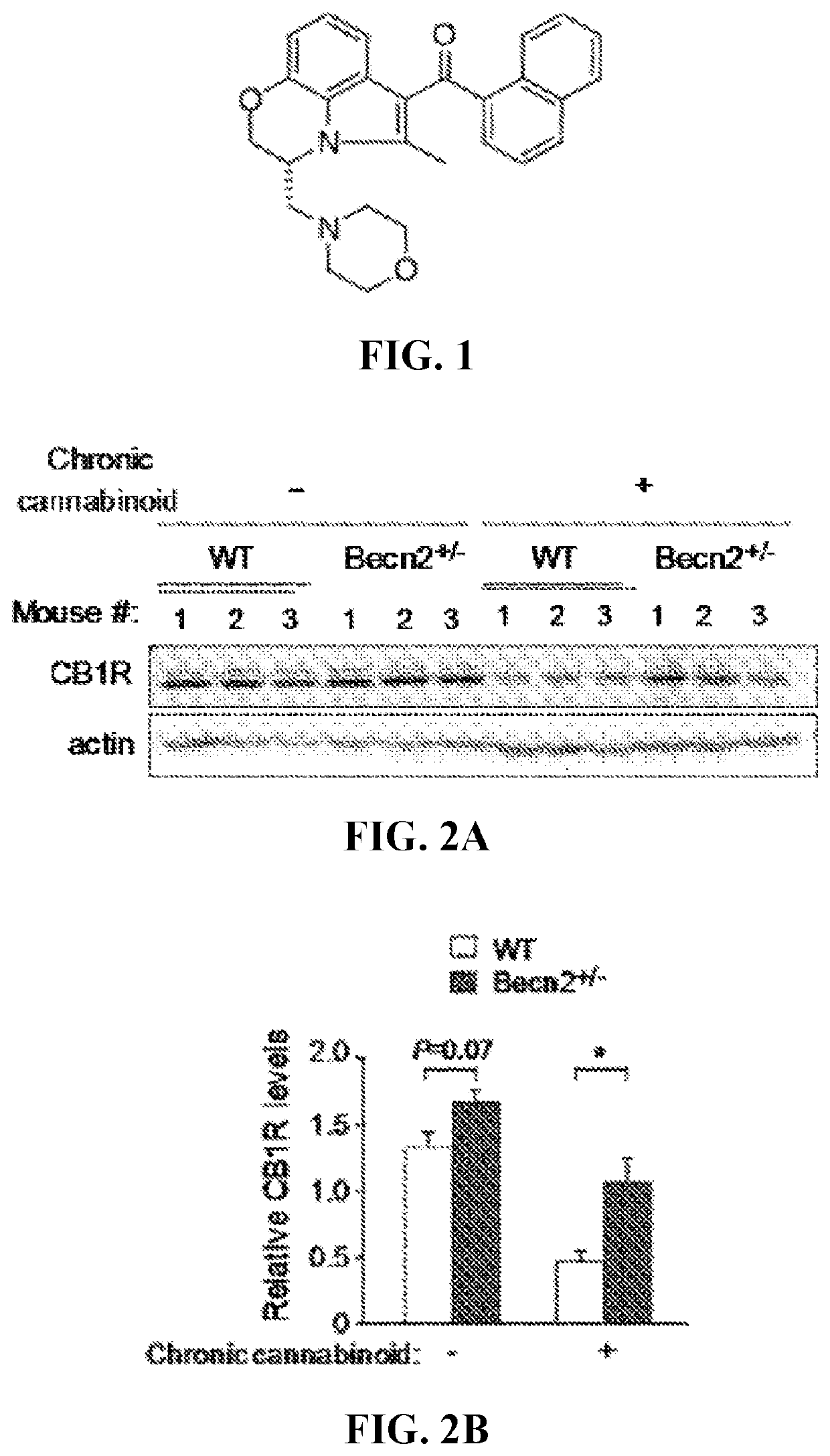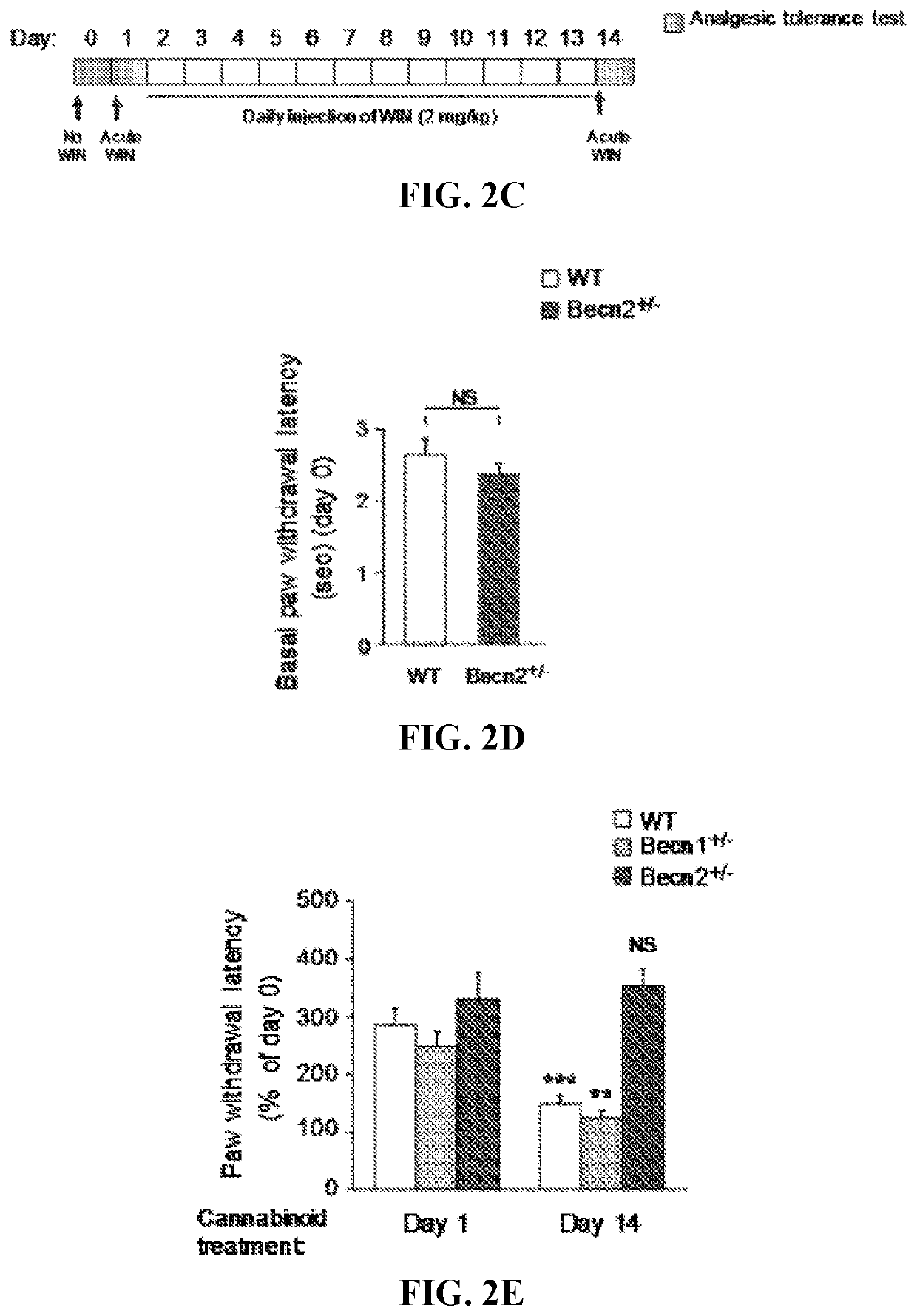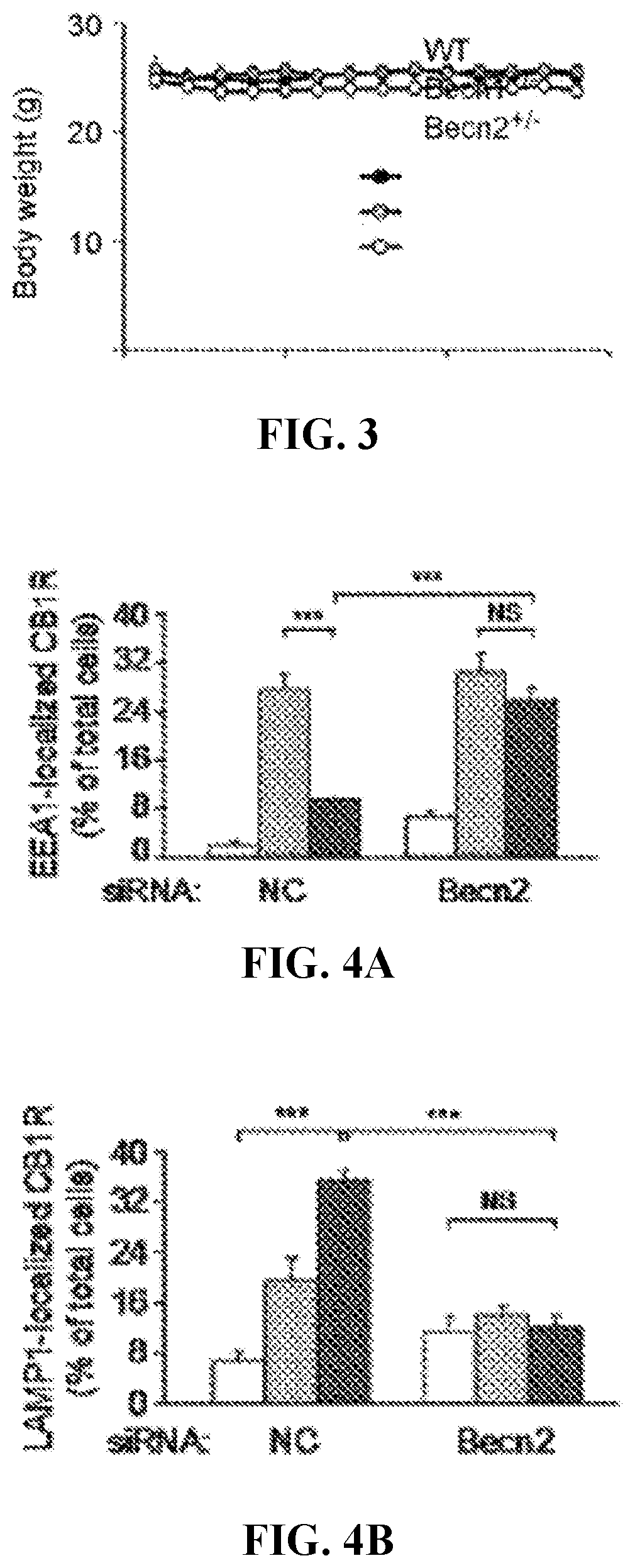Autophagy inducers for treatment of CNS conditions
a technology of cns and inducers, which is applied in the field of autophagy inducers for treatment of cns conditions, can solve the problems of insufficient understanding of the pathogenic mechanisms of cannabinoid tolerance, lack of prevention methods, and withdrawal symptoms, and achieves the effects of promoting sequestration of beclin 2, attenuating lysosomal degradation of cb1r, and maintaining responsiveness
- Summary
- Abstract
- Description
- Claims
- Application Information
AI Technical Summary
Benefits of technology
Problems solved by technology
Method used
Image
Examples
example 1
[0379]This example demonstrates autophagy activation by ML246 and Rg2.
[0380]To determine autophagy activation by the 2 compounds ML246 and Rg2, several markers of autophagy induction were analyzed, including formation of autophagosomes in cells and transgenic mice expressing GFP-tagged MAP1LC3 / LC3 (microtubule-associated protein 1 light chain 3; an autophagosome marker), degradation of SQSTM1 / p62 (sequestosome 1; an autophagy receptor and substrate protein), and conversion of LC3 from the non-lipidated form (LC3-I) to the phagophore- and autophagosome-associated lipidated form (LC3-II). Both compounds markedly increased numbers of GFP-LC3 puncta (representing autophagosomes) and decreased levels of SQSTM1 in HeLa cells and in mouse brain, as potently as starvation (FIG. 3C-E, FIG. S3A-C), although we did not detect significant changes in LC3-II conversion in brain. In addition, when cotreated with the lysosomal inhibitor bafilomycin A1, ML246 or Rg2 led to more accumulation of GFP-L...
example 2
[0381]This example demonstrates that ML246 and Rg2 autophagy inducers prevent WT mice from analgesic tolerance after chronic cannabinoid usage.
[0382]The efficacy of ML246 and Rg2 in the maintenance of cannabinoid analgesia in WT mice were tested. It was found that compared with vehicle injection, cotreatment of either ML246 or Rg2 with WIN potently rescued the pain-relieving effect of WIN in WT mice on day 14 to a day 1-like level (i.e., before repeated dosage) (FIG. 5A, Video S10-S12), suggesting that the autophagy-inducing compounds prevent analgesic tolerance induced by chronic WIN administration. The co-treatment regimen did not alter body weight of the mice (FIG. S4A). To confirm the findings with pharmacological inducers, it was further asked whether autophagy induction by physiological methods also rescues cannabinoid tolerance. Two methods that activate autophagy in mouse brain were adopted: the first is daily voluntary exercise by use of running wheels, which allows mice to...
example 3
[0384]This example demonstrates that autophagy induction preserves brain CNR1 level and activity in response to chronic cannabinoids.
[0385]To investigate whether restoration of CNR1 signaling underlies the behavioral regulation by autophagy activation, the level and functionality of CNR1 in mouse brain after co-administration of chronic cannabinoids and autophagy inducers was analyzed. Consistent with behavioral sensitization to WIN, after chronic WIN treatment higher levels of CNR1 in the brain of mice concurrently treated with ML246 or Rg2 (FIG. 6A), or fasted or exercised (FIG. 6B) were detected, which were comparable to the brain CNR1 level prior to chronic cannabinoid exposure (FIG. 1A). To determine whether the increased level of CNR1 represents CNR1 resensitization in the brain, the agonist-induced phosphorylation of signaling kinases downstream of CNR1 after chronic WIN exposure was analyzed. It was found that repeated WIN treatment decreased activation of CNR1 signaling ind...
PUM
 Login to View More
Login to View More Abstract
Description
Claims
Application Information
 Login to View More
Login to View More - R&D
- Intellectual Property
- Life Sciences
- Materials
- Tech Scout
- Unparalleled Data Quality
- Higher Quality Content
- 60% Fewer Hallucinations
Browse by: Latest US Patents, China's latest patents, Technical Efficacy Thesaurus, Application Domain, Technology Topic, Popular Technical Reports.
© 2025 PatSnap. All rights reserved.Legal|Privacy policy|Modern Slavery Act Transparency Statement|Sitemap|About US| Contact US: help@patsnap.com



